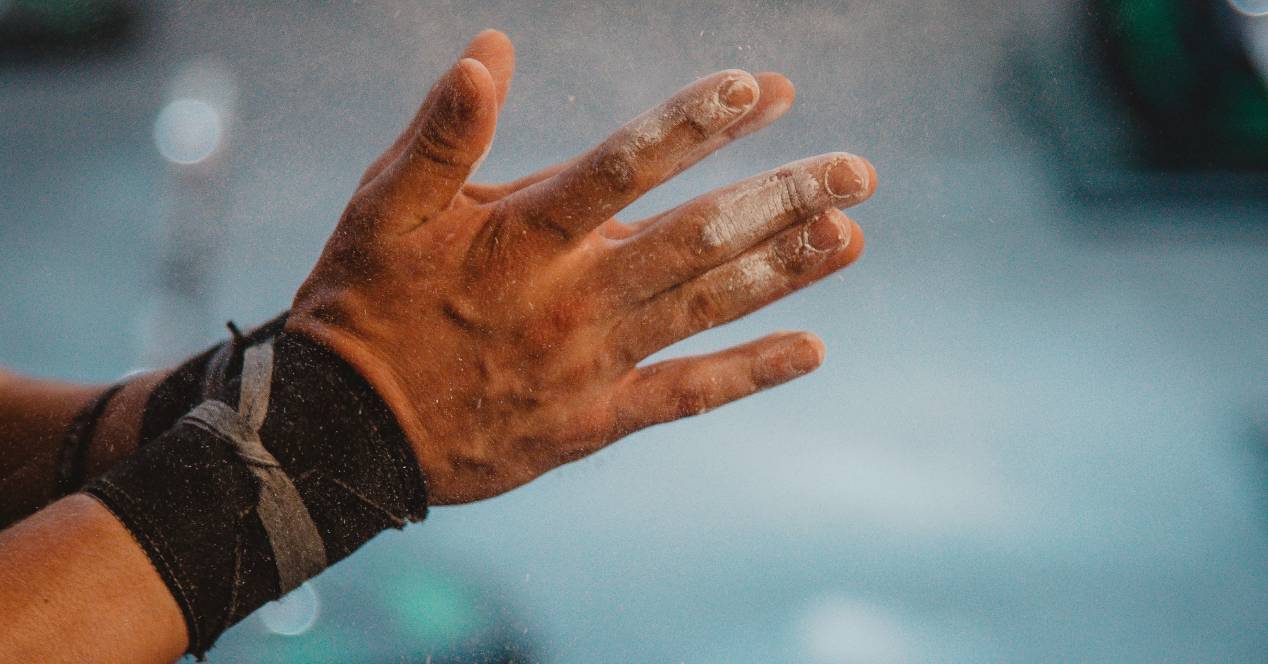
You'll find chalk (magnesium carbonate) in almost every gym. However, there has been very little research on the impact of using this substance to improve grip while lifting weights. It can help you in some situations and hinder you in others. Knowing the pros and cons of chalk lifting can help you decide when to use it without too much performance disruption.
Pros and advantages of its use
No available studies have directly tested the impact of chalk on weightlifting. However, several studies have provided facts relevant to this topic.
A January 2018 article, published in the International Journal of Exercise Science, may provide the best evidence. These researchers tested the effect of magnesium carbonate on nine subjects performing pull-ups with two different hand positions. The results indicated that using this powder on the hands it improved performance by about 16% with an open grip and 58% with closed hands.
Another article from March 2015, published in the Journal of Advanced Mechanical Design, Systems and Manufacturing also indirectly supports the idea that chalk will help improve grip during weightlifting. The researchers tested 15 subjects and showed that magnesium carbonate increased friction of a gloved hand sliding down a thin steel cylinder much like a weightlifting bar.
Another line of supporting evidence comes from gymnastics. The authors of a January 2014 report published in the Science of Gymnastics Journal tested seven participants and found that the use of magnesium carbonate increased the subjects' grip on the wooden bars of gymnastics equipment. Interestingly, the authors expressed concern that the chalk might provide too much grip and cause blisters.
Are there drawbacks?
Unfortunately, the chalk could decrease grip in some situations. For example, a March 2012 report published in the Proceedings of the Institution of Mechanical Engineers showed that, for a single participant, powdered chalk decreased the friction of fingers sliding over a dry, polished steel surface. The authors of this study believed that, under these conditions, powdered chalk it acted as a lubricant rather than a gripping aid.
A September 2016 article published in the Journal of Applied Biomechanics revealed another drawback. Although most people believe that sweat decreases hand friction, having a small amount of moisture actually increases friction. Chalk could decrease grip by removing too much moisture. You apparently need just the right amount of moisture to get the best grip. Unfortunately, you may need to modify your sweat rate by using a sweat blocker, such as vaseline, to find an effective balance between adhesion and lubrication.
Is it safe to use?
The FDA considers magnesium carbonate to be safe, according to an October 2015 report in the Journal of Biomaterials and Nanobiotechnology. The authors of that study They also found no evidence of toxicity. using an animal model. There are no known cases of allergic reactions, but there is always the possibility that you may have a chemical sensitivity to chalk or an additive. So please test by applying only a small amount to your hands during the first use.
However, you will find gyms that are prohibited from using powdered magnesium because it leaves everything stained and with a certain haze in the environment. Even so, there are different options, such as chalk liquid, to avoid that problem.